Amid the constant demands of healthcare, onboarding frequently doesn’t receive the time or attention it deserves. New team members are given a quick introduction, handed a pile of policies, and expected to perform immediately. But this rushed process may be quietly costing your organization more than you think.
According to the 2025 NSI National Health Care Retention & RN Staffing Report, the average cost of turnover for a single bedside RN is $61,110, and it takes about 3 months to fill a clinical role. A well-designed onboarding program does more than get new hires acclimated—it improves retention, increases efficiency, strengthens patient care, and supports your financial performance.
In short, structured onboarding delivers measurable ROI.
Here’s how.
Why Onboarding Matters More in Healthcare
Healthcare isn’t like other industries. Mistakes can have serious consequences. There’s little room for confusion or delay when it comes to patient care, insurance coding, compliance, or clinical operations. Every role—from the front desk to billing to direct patient care—requires clarity, confidence, and connection to the team.
That’s where structured onboarding comes in. When new hires are given the tools, guidance, and time to learn your systems, culture, and expectations, they perform better. They’re less likely to make costly errors, more likely to stay long-term, and more engaged from the start.
The Cost of Skipping Structured Onboarding
Here’s what often happens without a solid onboarding process:
- High turnover: Employees who feel lost or unsupported tend to leave faster—often within the first 90 days.
- Productivity delays: Without clear instruction, it takes longer for new hires to contribute effectively.
- Compliance risks: If staff don’t fully understand policies, procedures, or regulations, it opens the door to costly compliance issues.
- Poor patient experiences: Confused or disengaged employees can impact service quality, leading to patient dissatisfaction or even negative reviews.
These problems add up—both in dollars and reputation.
What is Structured Onboarding?
Structured onboarding in healthcare is more than just an orientation session. It’s a clear, step-by-step process designed to:
- Introduce new employees to your organization’s values, culture, and mission
- Train them in the systems and procedures they’ll use every day
- Help them build relationships with coworkers and leadership
- Set clear expectations for performance and growth
- Provide regular check-ins and support throughout their first few months
This structured approach is consistent, repeatable, and customized to your practice’s needs—making onboarding both practical and impactful.
The ROI of Onboarding in Healthcare: What You Gain from Getting It Right

Now, let’s talk about the return. Here’s how structured onboarding in healthcare pays off for providers:
1. Reduced Turnover
Employees who feel prepared and supported are much more likely to stay. Fewer exits mean less time and money spent on hiring—and more stability for your team.
2. Faster Productivity
Onboarding in healthcare helps new hires become fully productive faster. Instead of spending weeks (or months) figuring things out, they’re given the tools to do the job right from the start. That’s time saved for them—and for the team members who would otherwise have to fill in or retrain them later.
3. Fewer Errors and Better Compliance
From insurance claims to medication charts, small errors can have big consequences. Structured onboarding in healthcare ensures your team understands your systems, documentation standards, and compliance requirements—reducing costly mistakes.
4. Improved Patient Satisfaction
When your staff is confident, organized, and aligned, it shows. Patients notice when things run smoothly—appointments are on time, billing is clear, and interactions are professional and kind. A well-trained team directly improves the patient experience, leading to higher satisfaction scores and better word of mouth.
5. Stronger Team Culture
Onboarding in healthcare isn’t just about logistics—it’s about connection. A good program introduces new employees to your values, helps them meet their coworkers, and makes them feel part of something meaningful. That sense of belonging improves morale, collaboration, and overall workplace culture.
What Structured Onboarding Looks Like in Practice
A good onboarding plan doesn’t have to be complicated, but it should be intentional. Here’s what a 30-60-90 day onboarding roadmap might include:
Day 1–30:
- Welcome and HR orientation
- Overview of systems, tools, and policies
- Initial role-specific training
- Assigned mentor or peer buddy
- Short-term goals set with manager
Day 31–60:
- Deeper training on job responsibilities
- Hands-on practice with support
- Introduction to department leads
- First performance check-in and feedback session
Day 61–90:
- Independent task handling
- Continued mentorship
- Final onboarding review
- Personal development plan creation
Add in regular check-ins, opportunities for feedback, and recognition of progress—and you’ve got a framework that works.
Tips to Build a High-ROI Onboarding Process
If you’re ready to invest in structured onboarding, here’s where to start:
- Standardize the process – Use a checklist or digital workflow to ensure consistency across all hires.
- Customize by role – A billing specialist will need different training than a medical assistant. Tailor accordingly.
- Assign a mentor – Peer support helps new employees adjust faster and feel more comfortable asking questions.
- Use a 30-60-90 day plan – Set clear goals and review progress at regular intervals.
- Incorporate feedback – Ask your new hires what worked and what didn’t, and adjust your process accordingly.
- Celebrate milestones – Acknowledge progress and achievements to build motivation and morale.
Final Thoughts: Onboarding in Healthcare Is an Investment—Not an Expense

It’s easy to think of onboarding as just another HR task. But in healthcare, it’s much more than that. It’s your first chance to set up new employees—and your practice—for long-term success. A structured onboarding program leads to better retention, fewer errors, and a stronger, more confident team. That means better care for your patients and real savings for your organization. At the end of the day, the ROI of structured onboarding isn’t just about dollars. It’s about building a workplace where people thrive—and where patients get the consistent, high-quality care they deserve.
Need help improving your onboarding process?
Our customized onboarding solutions are designed to ensure compliance, boost efficiency, and foster trust from day one. Whether you’re training new hires or standardizing onboarding across locations, we’ve got you covered. Enroll your large team in our customized, free course development program today—and start building a workforce that’s confident, compliant, and patient-ready.
Contact us to get started. Let’s build something better, together. Click here.



